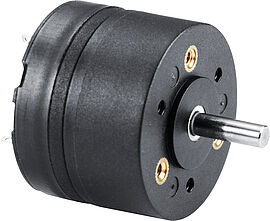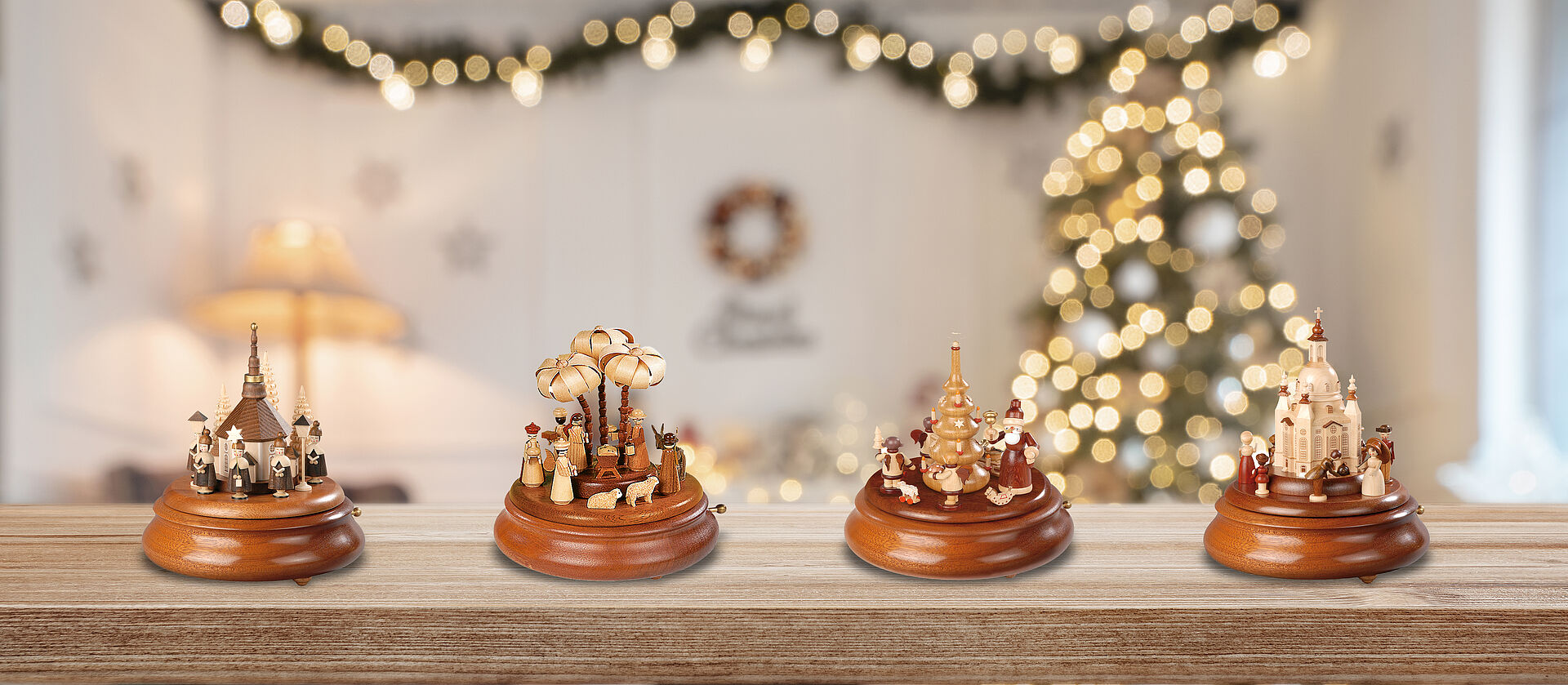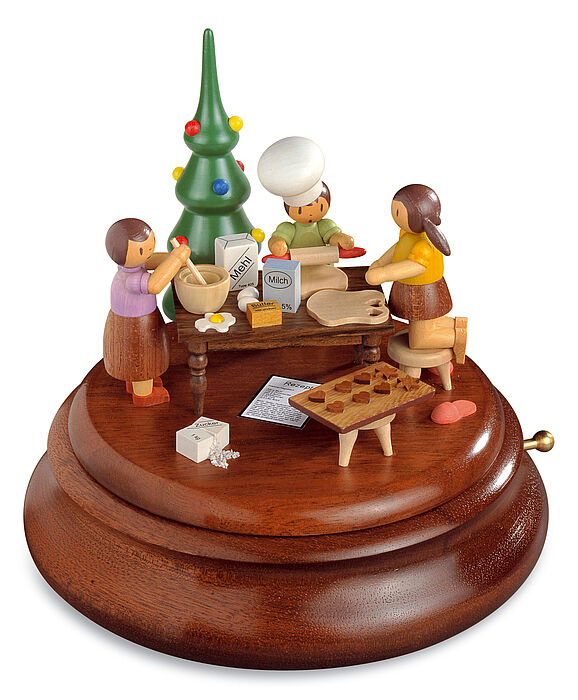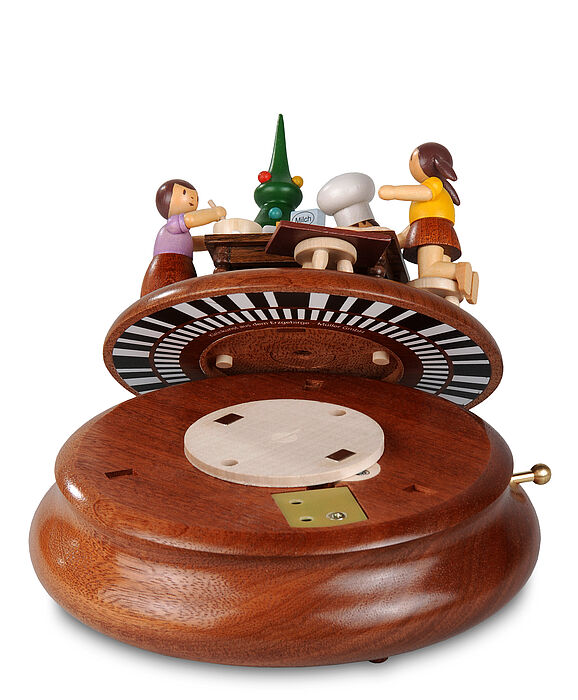In the past, life in the mountains was often tough and austere. Plants that flourished in the valleys struggled at altitude or didn’t grow at all, and agriculture was generally a scant undertaking. Transport and traffic was arduous and complex, which was also detrimental to trade. This is why the people living in these types of areas traditionally developed a lot of imagination and unique skills in order to make a living.
Know-how cluster Ore Mountains
One of the solutions was to produce small and thus easy-to-transport products. It’s not by accident that the traditional centers of watchmaking can be found in the Swiss Jura, in the Black Forest, and in the Ore Mountains. That is also where other handicraft traditions with a global appeal emerged over the centuries: bobbin lace, musical instruments and wooden toys are exported from the south of Saxony to all over the world.
The Müller family in the toy metropolis of Seiffen specialized in the latter. In 1899, Edmund and Lina Müller started producing wooden miniature houses, jewelry boxes, and toys. By now, Müller has grown into a mature company run by their great-grandson Ringo Müller. As a wooden toy maker who made a candle arch as his masterpiece, he personally represents the handicraft tradition of his hometown.
And even the candle arch combined old and new: it was the first candle arch with fully electrical interior lighting. Other models that could play the sounds of the Dresden Frauenkirche or organ music were added later on. And of course they came with a fitting wooden model of the restored cathedral as a figure motif.
In addition to innovating constantly, the managing director also has an open ear for his customers. Because they were the impetus for the development of a completely new product, as he explains: “The traditional music box has a mechanical mechanism that can play only one piece of music. But the consumers at the fairs and markets kept asking us if there was a way to have a better selection, and whether it would be possible to play their own music collection. We were already familiar with music electronics from our candle arches, so this was not a major leap for us.”
Own audio format
But our initial inquiry with the manufacturer of the playback mechanism was a miss: for them, the development effort was too great and difficult to finance. And besides rather complex hardware, there were also issues concerning licensing that had to be considered. “The GEMA fees for a music player are just too high for our relatively small quantities," Ringo Müller explains. “So we couldn't just use a traditional MP3 module or something like that, for which we would have had to pay the GEMA fee.”
The solution was eventually found in Chemnitz, at the Chair for Computer Engineering at the Technical University. Professor Wolfram Hardt was excited about the opportunity to work on a real-world and easy-to-grasp topic in addition to his rather theory-based scientific work. Together with a handful of postgraduate students, he not only developed the software for controlling the world's first electronic music box, but also his own data format for the royalty-free pieces of music that it was supposed to play.
Today, the company’s website offers several hundred songs and melodies for free. The company is especially proud of the pieces that the world-famous Dresden trumpet virtuoso Ludwig Güttler recorded with a wind ensemble exclusively for the Müller music box.
The music box comes with a Bluetooth interface for connection to a computer or smartphone and to transfer audio files. “This enables families to record Christmas songs as a choir or with instruments, for example,” explains Ringo Müller. “The recording is then converted into our .song format and sent back. All that’s left to do is transfer the songs to the memory chip of the music box via Bluetooth.”
Harmony between music and motif
The music box can hold 25 hours of music and five own playlists to suit the occasion and mood. In addition to familiar melodies, spoken messages, love poems, stories or fairy tales can also be played back. Thanks to the electronics, the music box also functions as an alarm clock, or it can play back a specific piece of music on the hour.
And just as you can change up the music, you can also change the rotating motif panels to suit the season with Christmas or summer themes, for example. For the trumpet pieces, for example, the company offers a motif panel that shows the artists in front of the Frauenkirche in Dresden. A specially developed round barcode on the underside of the panel is recognized by the console, which then plays the appropriate music.
“In 2009, when the development of the concept for the electronic music box was already well underway, we searched the Internet for a suitable motor for the music box and found FAULHABER," remembers Ringo Müller. “There is very little space in the box, so we needed a very small drive that was still powerful enough to set the motif panel – which has considerable weight – into an even, slow rotation. This had to be smooth and very quiet, so as not to disturb the music playback.”
Economical speed control for motif panels
The sales engineer recommended a DC geared motor from the 2619…SR series with precious-metal commutation. With a diameter of 26 millimeters, it is 19.2 millimeters long together with the integrated spur gearhead. And with the high power density and a minimal moment of inertia, the 207:1 transmission provides the slow synchronous speed without audible interference. Also critical is the high level of efficiency, since the music box draws its power from batteries and the electronics can only deliver low voltage to the motor.
This fundamental mechanical principle has stood the test of time for more than ten years without any major changes. The firmware of the music box, on the other hand, is constantly being further developed together with the partners at Chemnitz University of Technology. Version 4.0 should be ready in 2023. The library of available music from a wide range of artists is also constantly growing. This includes works by the well-known children's song author Rolf Zuckowski. “Our collaboration began with his song 'In der Weihnachtsbäckerei', which goes hand-in-hand with our tradition,” recalls Ringo Müller. “Today, there are many more songs and four more motif discs, which we designed based on his ideas.”
Products



